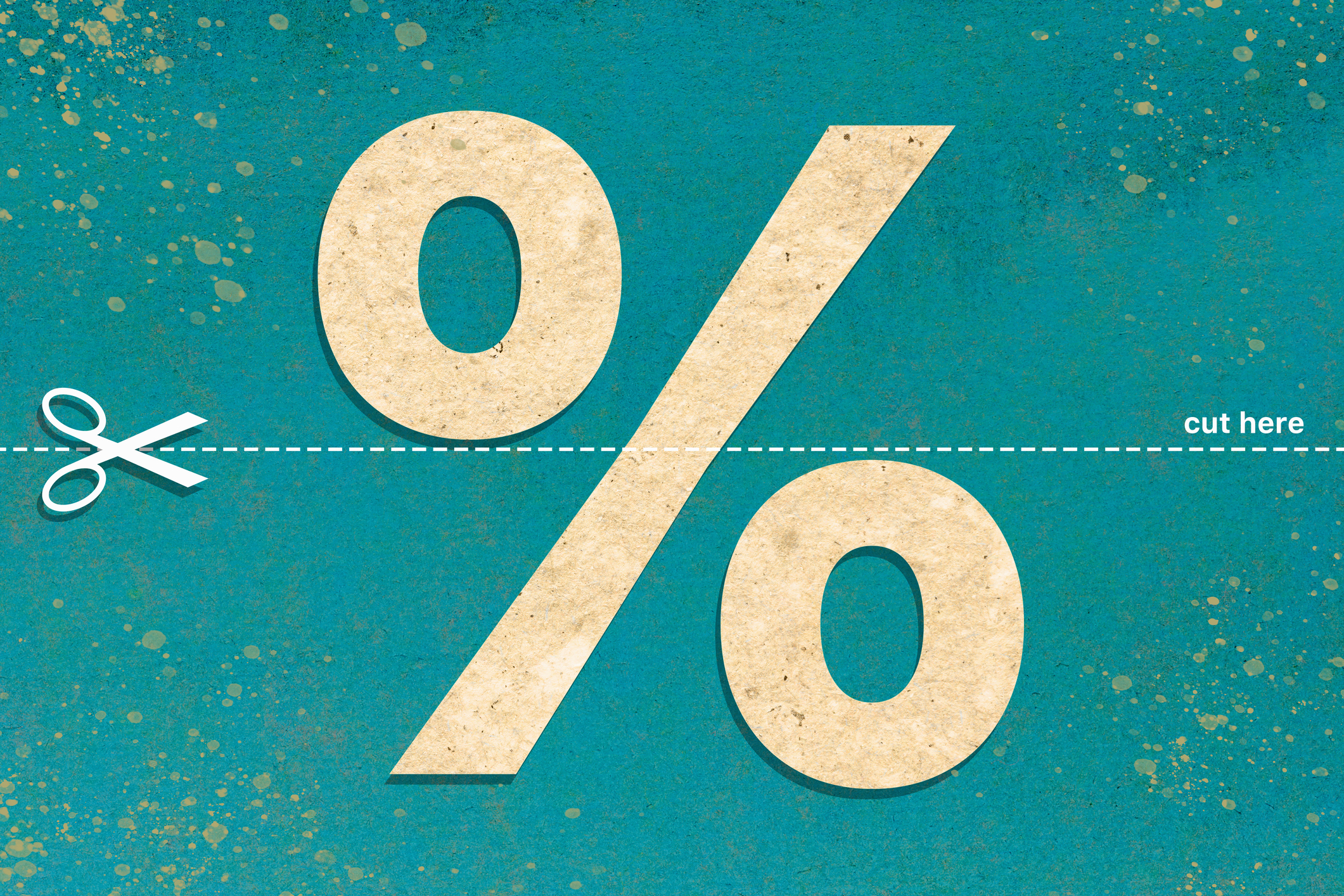How to Find the Right Financial Adviser
The right financial adviser can provide valuable guidance, but it doesn’t come cheap — and the fee structures can be confusing.


You probably know that the right financial adviser won't give away his or her expertise for free. But if you’re searching for an adviser for the first time, you may suffer sticker shock when you find out what they charge for their services.
Finding the right financial adviser
That sticker shock was the experience of C.J. Shank, who is semiretired and has been interviewing advisers to help her plan for her upcoming full retirement. “The fees seemed awfully high. Many wanted a percentage of all the money I saved over the last 40 years,” says Shank, who is 67 and lives in Hagerstown, Md.
Whether fees or other roadblocks turn them away from advisers, most Americans manage money on their own. Only 37% reported working with a financial adviser in a 2023 Northwestern Mutual survey, even though 66% admitted their financial plans needed improvement. And most investors are not excelling with their portfolios. The typical investor underperformed the S&P 500 by nearly three percentage points a year over the past 30 years, which can mean losing out on hundreds of thousands of dollars over a lifetime. Compared with those missed earnings, an adviser’s fees might seem like a pittance.
From just $107.88 $24.99 for Kiplinger Personal Finance
Become a smarter, better informed investor. Subscribe from just $107.88 $24.99, plus get up to 4 Special Issues

Sign up for Kiplinger’s Free Newsletters
Profit and prosper with the best of expert advice on investing, taxes, retirement, personal finance and more - straight to your e-mail.
Profit and prosper with the best of expert advice - straight to your e-mail.
“If someone’s sick, they pay for a doctor; if someone needs legal advice, they pay for an attorney. For some reason, when people need financial advice, they go to their brother, neighbor or father-in-law. It’s only when they’re really out of options that they pay for help,” says J.J. Williams, CEO of Williams Financial in Sarasota Springs, N.Y., and a board member of the National Association of Personal Financial Advisors.
How we got here
The industry may have itself to blame, at least partially, because fee structures aren’t always clearly explained to clients. A 2022 study by the Financial Industry Regulatory Authority (FINRA) found that 21% of investors didn’t realize they were paying any fees, and another 17% didn’t know what they were paying.
Industry trade groups and associations, such as the National Association of Personal Finance Advisors (NAPFA) and the Certified Financial Planner Board of Standards, are working to make adviser compensation more transparent and aligned with the interests of consumers. That said, there is still wide variation in how advisers charge, the services they offer and the regulations they need to follow.
If you’re looking for an adviser, here’s what you need to know about assessing their fees and finding one whose services fit your needs.
Types of adviser fees
Adviser fee models fall into a few main categories:
Assets under management (AUM). An adviser who uses an AUM model deducts a percentage of your total portfolio value each year. For example, if you hire an adviser to manage your $1 million portfolio and he charges 1% for the AUM fee, you would owe $10,000 per year. In exchange for the fee, the adviser builds your portfolio and manages the investments on your behalf.
AUM fees have been the longtime standard for the advisory business. Because advisers earn more as your portfolio grows, they have an incentive to perform well. “They have more skin in the game versus advisers who charge a flat fee that’s the same each year,” says Loren Paul Fiffik, a CFP with Confluence Financial Partners in Pittsburgh.
The percentage charged for AUM fees usually decreases as your portfolio grows. On average, advisers charge 1.12% per year for a portfolio of $100,000, 1.02% for a portfolio of $1 million and 0.98% for a portfolio of $2 million, according to a 2023 survey by Advisory HQ.
Advisers who charge using an AUM model typically require that clients have a minimum portfolio size, such as $250,000 or $1 million. That means hiring an adviser who charges by assets under management might not be possible if you have just started investing. And advisers charge the AUM fee whether your portfolio goes up or down — you won’t find a professional financial adviser who is willing to be paid only if your portfolio has a positive return.
Flat fees. Under a flat-fee system, you pay your adviser a set amount for their work. There are a few ways to do this. You could pay by the hour whenever you need help or want to ask questions. You could pay a flat amount for a specific job, such as creating a financial plan that you will then manage yourself. And some advisers charge a monthly or annual fee as a retainer for ongoing support, for answering your questions or for managing your portfolio.
The flat-fee structure is becoming more popular with younger financial professionals, especially millennials and members of Generation Z, says Adriel Tam, CEO of AdvisorCheck, an online platform for comparing advisers. He thinks this system is fairer to clients because you pay the same amount regardless of portfolio size. “It takes the same work to manage a $2 million account as a $1 million account. Why should an adviser charge twice as much?”
There’s usually no investment minimum required with a flat-fee structure because what you pay isn’t based on how much money you bring to the table. An adviser may charge $200 to $400 per hour, or $1,500 to $6,000 to build a financial plan. For ongoing investment management, the adviser may charge between $2,000 to $10,000 a year, depending on the level of service provided. “Financial advisers are gradually becoming more like attorneys. They charge for their time, and it’s expensive, but you only pay when you use them,” says Tam.
If you pay a flat fee for advice only, you owe that money whether you follow through or not, whereas with an AUM structure, the adviser earns the money by running your portfolio. Daniel Milan, managing partner at Cornerstone Financial Services in Southfield, Mich., uses both approaches. He charges a flat fee to advise clients who are early in their careers and still building wealth. Once clients have a larger portfolio that needs more hands-on investment management, they switch to the AUM model.
Commissions. Under a commission model, the financial professional makes money if you buy a financial product such as a stock, bond, annuity or insurance policy. Insurance agents and stockbrokers work on a commission model. They might give you financial advice for free and even refer to themselves as financial advisers, but they make money by closing a sale.
A commission structure could make sense if you know what kind of investment or insurance product you’d like and just want to buy it, Tam says. Because you aren’t paying for advice, you can save money by working with a commission-based agent or broker.
But the commission model can be problematic for clients who aren’t sure what to buy and instead rely on a recommendation from an agent or broker who might make more money by selling one product instead of another. For example, life-insurance commissions are often based on the total premiums paid, meaning an agent earns much more by recommending more-expensive, permanent life insurance products, such as whole life or variable universal life insurance, compared with term life insurance. “If they made the commissions more uniform, that would remove the conflict of interest. But right now, they don’t,” says Fiffik, the CFP from Pittsburgh.
Insurance agents and stockbrokers are legally required to recommend products that are suitable and appropriate for your situation — but these professionals don’t have to put your interests ahead of the insurance agents and stockbrokers. In other words, if two suitable products are available and one is slightly less desirable for your situation and pays a higher commission, the agent or stockbroker can recommend it.
Advisers who follow a fiduciary standard must put your interests above their own in these situations, recommending the best product even if it means less money in their pocket. Tam believes there are plenty of quality stockbrokers and insurance agents who put your interests first despite the financial incentives for them. Still, it’s essential to understand these possible conflicts before buying.
You should also ask how the commission will affect your investment. Commission-based mutual funds usually deduct a fee known as a load when you buy and/or sell the fund. Life insurance policies and annuities can include hefty surrender charges if you cancel within the first three to 10 years. Shank, the semiretiree from Maryland, ran into this problem after buying an annuity recently. “I liked that it paid a guaranteed 5.8% return for five years, but I didn’t realize I had to wait 10 years to touch my money.”
Fee-based versus fee-only. As if sorting through fee models wasn’t tricky enough, another issue is that some advisers switch between roles and regulations. A fee-based adviser charges you for advice but may also earn commissions when you buy products.
“It’s confusing. For the first 30 minutes, while reviewing your plan, the adviser works as a fiduciary. But then when it’s time to start making investments, they take that hat off, and the standard changes,” says Williams, the financial adviser on NAPFA’s board.
Fee-only advisers do not earn commissions and make money only by giving advice. They always work as fiduciaries, putting your interest first.
The Garrett Planning Network and NAPFA limit membership to fee-only advisers and offer an online database of these professionals. This past summer, NAPFA made an exception to allow members who are still earning commissions from sales at past jobs if they’ve tried to renounce those earnings and their former employer refuses to stop paying them for legal reasons. These ongoing commissions must total no more than $2,500 annually, and the adviser must donate the money to charity.
Narrowing down the choices
With the adviser fee structures in mind, you can then consider what role, if any, an adviser should play in your life. As you check out the market, these tips can help you find the ideal solution.
Consider the type of advice and support you want. You should decide whether you want investment and portfolio management, broader financial planning — through which an adviser helps you figure out your goals and the steps needed to reach those goals — or both. Advisers who offer only financial planning tend to charge flat fees, whereas investment managers typically charge by assets under management.
From there, consider how involved you want your adviser to be. Picking the right style of adviser is similar to renovating your kitchen, says Tam, the CEO of AdvisorCheck. “Are you looking for a small, specific job, like replacing the countertops, and you’re comfortable figuring out the necessary steps yourself? Or do you want a contractor to manage the entire process for a full remodel?” If you are confident in your investment knowledge and know you’ll follow through on recommendations, an adviser who charges a flat fee by the plan or by the hour is probably the best fit.
If you want someone to oversee and run your entire financial plan and investment portfolio, you likely are better off with an adviser charging an AUM fee. Although some flat-fee advisers offer more comprehensive support and portfolio management, it’s more common for those services to be offered by advisers working under an AUM model, says Fiffik, the CFP from Pittsburgh.
Research your local market. Adviser fees vary by market, says Milan, the investment adviser from Michigan. He recommends contacting several advisers to gauge what’s fair and common in your area. You can search for local advisers through the CFP Board, the Financial Planning Association's Planner Search tool or NAPFA. If you aren’t happy with the availability in your region, you can try broadening your search to other areas, as it’s becoming more common for advisers to work with remote clients. The XY Planning Network has a database of advisers who will work remotely.
Ask advisers about their fees and what’s included. When you interview potential advisers, ask about the fees for their services, including whether they earn commissions. Most should disclose their fee structure up front; if they don’t, it’s a red flag. You should also ask what’s included. Many advisers working under an AUM model also include tax and estate planning and insurance services for no additional charge. There’s a wide range of what you may get for that 1% a year.
Weigh the fees against the value. Hiring an adviser is often a costly undertaking. Just remember that the typical investor who goes it alone underperforms the market, and mistakes such as selling in a panic after a market crash and missing the future rebound contribute to that underperformance. “Delegating investment decisions to a third party can take out the emotions,” says Milan.
Although the exact value of a financial adviser is hard to quantify, Vanguard estimates the amount at roughly 3% a year in extra return because of factors such as proper asset allocation (which adds about 0.6%), more cost-effective investment implementation (0.3%), portfolio rebalancing (0.14%), spending strategies (up to 1.2%) and behavioral coaching (up to 2%). “There have been times when we’ve made a couple of decisions in a client’s plan that paid for 10 years or more of fees,” says Williams, of Williams Financial.
If you are already a hands-on manager of your portfolio, you feel confident in your ability to pick the right investments for your goals, you’re a disciplined saver, and you keep a cool head when the market goes nuts, you may not need ongoing support from an adviser. But every few years you might want to hire an adviser by the hour for a short portfolio review to confirm that your plan is on track and you’re up to date with the latest laws relevant to your situation.
Wait for the right match. Your adviser will help you handle some of your most important financial decisions. Don’t trust just anyone in this role. “It’s better to take your time and make the right decision versus forcing a relationship that doesn’t work,” says Milan. After you sign up, recheck the financial-advice market every few years to ensure your adviser is doing a good job; check that their adviser’s fees and level of service remain competitive.
Shank hired an adviser in 2022 who charged a $2,500 flat fee for a year of support, but she ultimately did not renew and is still searching for her ideal match. “She looked at my investments and made some recommendations, but I didn’t feel comfortable turning over my portfolio to her firm,” says Shank, who felt that the firm didn’t provide a clear picture of how it would manage her investments. “In the end, I’d like someone I can communicate with.”
Note: This item first appeared in Kiplinger's Personal Finance Magazine, a monthly, trustworthy source of advice and guidance. Subscribe to help you make more money and keep more of the money you make here.
Read More
Profit and prosper with the best of Kiplinger's advice on investing, taxes, retirement, personal finance and much more. Delivered daily. Enter your email in the box and click Sign Me Up.

David is a financial freelance writer based out of Delaware. He specializes in making investing, insurance and retirement planning understandable. He has been published in Kiplinger, Forbes and U.S. News, and also writes for clients like American Express, LendingTree and Prudential. He is currently Treasurer for the Financial Writers Society.
Before becoming a writer, David was an insurance salesman and registered representative for New York Life. During that time, he passed both the Series 6 and CFP exams. David graduated from McGill University with degrees in Economics and Finance where he was also captain of the varsity tennis team.
-
 4 Great Tools to DIY Your Own Financial Plan
4 Great Tools to DIY Your Own Financial PlanSmart Savings Several tools picked out by Kiplinger that DIYers can use to make their own financial plan.
-
 The 7-Month Deadline That Sets Your Lifetime Medicare Premiums
The 7-Month Deadline That Sets Your Lifetime Medicare PremiumsUnderstanding Medicare enrollment is crucial, as missing deadlines can lead to permanent late enrollment penalties and gaps in coverage.
-
 Retirees Living in Portugal: You Need a Post-NHR Tax Strategy
Retirees Living in Portugal: You Need a Post-NHR Tax StrategyWhen your 10-year Non-Habitual Resident tax break ends, you could see your tax rate soar. Take steps to plan for this change well before the NHR window closes.
-
 4 Great Tools to DIY Your Own Financial Plan
4 Great Tools to DIY Your Own Financial PlanSmart Savings Several tools picked out by Kiplinger that DIYers can use to make their own financial plan.
-
 Should You Renew Your CD?
Should You Renew Your CD?With rate cuts impacting earnings, we examine if now is a wise time to renew CDs.
-
 21 Money Moves Smart People Are Making Before 2026
21 Money Moves Smart People Are Making Before 2026These steps can help trim your tax bill, boost your savings, lower your health care costs and set you up for financial success in 2026.
-
 3 Ways to Stretch the 2026 Social Security COLA For Your Budget
3 Ways to Stretch the 2026 Social Security COLA For Your BudgetThree steps retirees can take to stretch the Social Security COLA to fit their budgets.
-
 Giving Tuesday 2025: 'Every Small Act Makes a Major Difference'
Giving Tuesday 2025: 'Every Small Act Makes a Major Difference'GivingTuesday encourages generosity in any form, from donating to charity to helping your neighbors.
-
 How to Position Your Portfolio for Lower Interest Rates
How to Position Your Portfolio for Lower Interest RatesThe Federal Reserve is far from done with its rate-cutting regime. This is how investors can prepare.
-
 Moves to Manage the Soaring Costs of Owning a Car
Moves to Manage the Soaring Costs of Owning a CarIt's costing more and more to keep a car on the road, but you can drive some costs down. Here's how to get a better deal on insurance premiums, repairs and gas
-
 Pickleball Injuries are Getting Out of Hand for Some Adults
Pickleball Injuries are Getting Out of Hand for Some AdultsAs more older adults take up pickleball, injuries are on the rise. Here's how you can lower your risk and still have a ball.